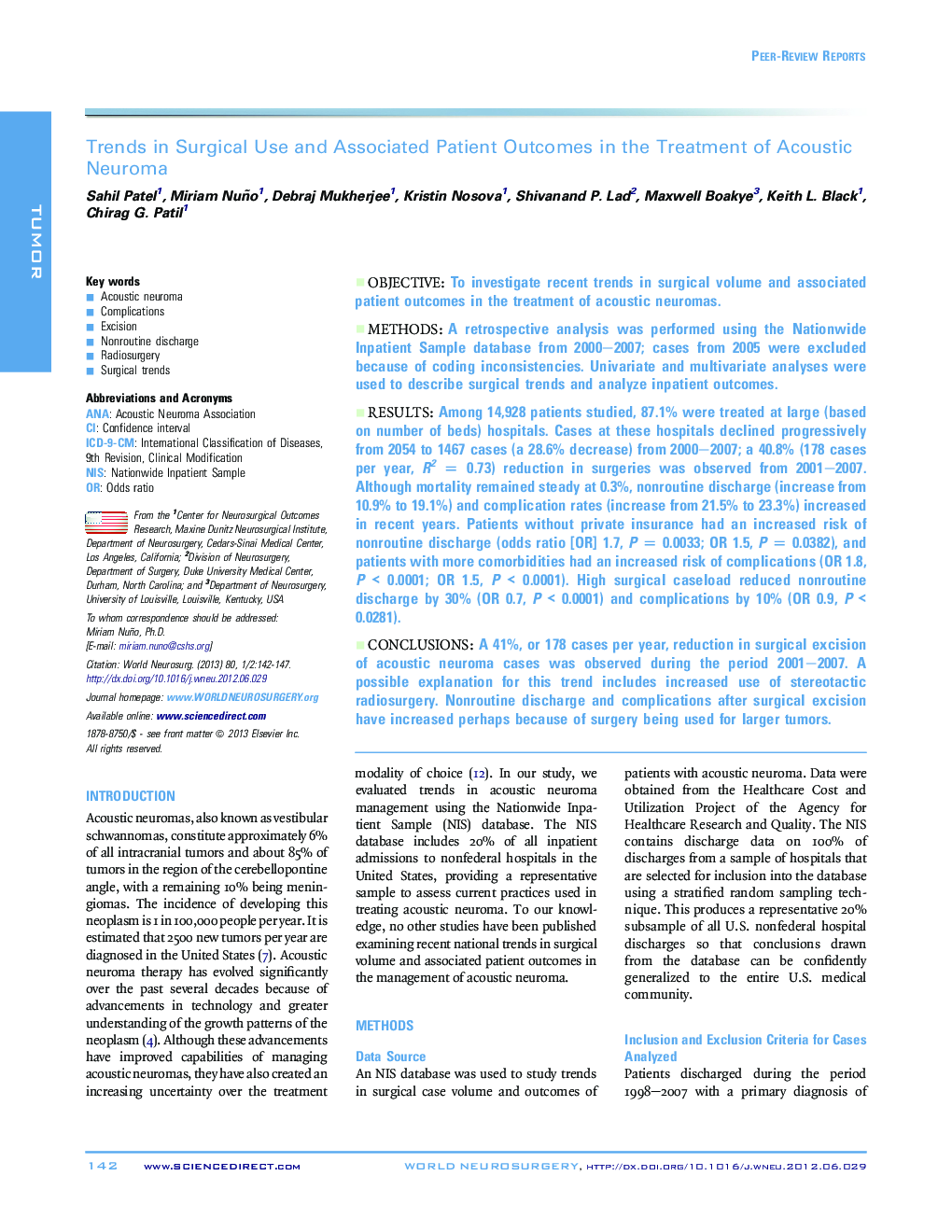| Article ID | Journal | Published Year | Pages | File Type |
|---|---|---|---|---|
| 3096276 | World Neurosurgery | 2013 | 6 Pages |
ObjectiveTo investigate recent trends in surgical volume and associated patient outcomes in the treatment of acoustic neuromas.MethodsA retrospective analysis was performed using the Nationwide Inpatient Sample database from 2000–2007; cases from 2005 were excluded because of coding inconsistencies. Univariate and multivariate analyses were used to describe surgical trends and analyze inpatient outcomes.ResultsAmong 14,928 patients studied, 87.1% were treated at large (based on number of beds) hospitals. Cases at these hospitals declined progressively from 2054 to 1467 cases (a 28.6% decrease) from 2000–2007; a 40.8% (178 cases per year, R2 = 0.73) reduction in surgeries was observed from 2001–2007. Although mortality remained steady at 0.3%, nonroutine discharge (increase from 10.9% to 19.1%) and complication rates (increase from 21.5% to 23.3%) increased in recent years. Patients without private insurance had an increased risk of nonroutine discharge (odds ratio [OR] 1.7, P = 0.0033; OR 1.5, P = 0.0382), and patients with more comorbidities had an increased risk of complications (OR 1.8, P < 0.0001; OR 1.5, P < 0.0001). High surgical caseload reduced nonroutine discharge by 30% (OR 0.7, P < 0.0001) and complications by 10% (OR 0.9, P < 0.0281).ConclusionsA 41%, or 178 cases per year, reduction in surgical excision of acoustic neuroma cases was observed during the period 2001–2007. A possible explanation for this trend includes increased use of stereotactic radiosurgery. Nonroutine discharge and complications after surgical excision have increased perhaps because of surgery being used for larger tumors.
